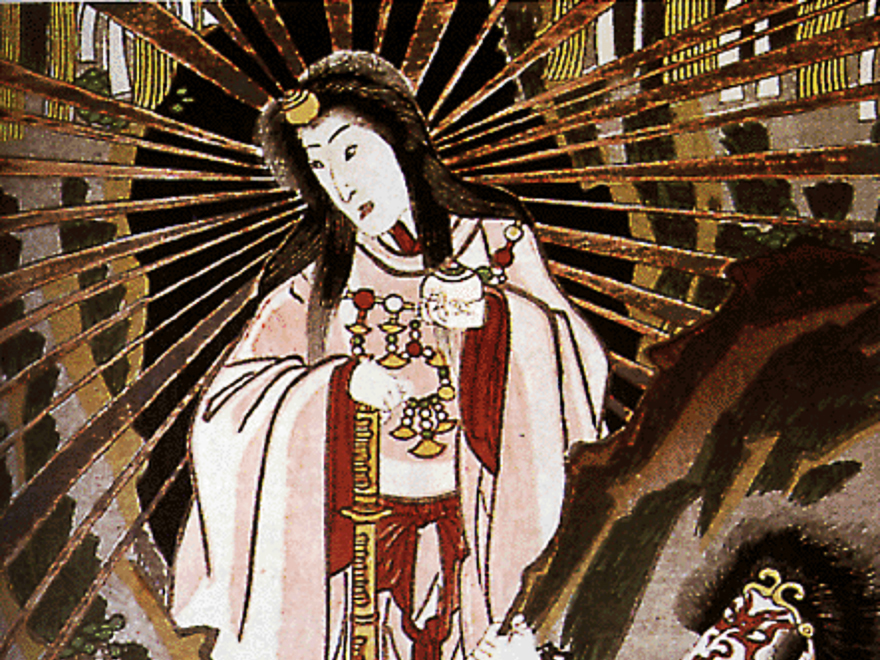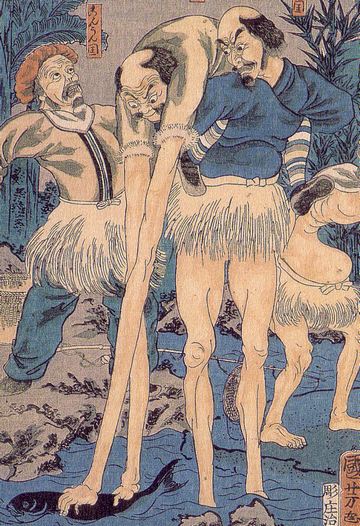
A weasel is a mammal of the genus Mustela of the family Mustelidae. The genus Mustela includes the least weasels, polecats, stoats, ferrets and minks. Members of this genus are small, active predators, with long and slender bodies and short legs. The family Mustelidae is often referred to as the "weasel family". In the UK, the term "weasel" usually refers to the smallest species, the least weasel (M. nivalis).

Kinbaku (緊縛) means "tight binding," while Kinbaku-bi (緊縛美) literally means "the beauty of tight binding." Kinbaku is a Japanese style of bondage or BDSM which involves tying a person up using simple yet visually intricate patterns, usually with several pieces of thin rope. In Japanese, this natural-fibre rope is known as asanawa (麻縄); the Japanese vocabulary does not make a distinction between hemp and jute. The allusion is to the use of hemp rope for restraining prisoners, as a symbol of power, in the same way that stocks or manacles are used in a Western BDSM context. The word shibari came into common use in the West at some point in the 1990s to describe the bondage art Kinbaku. Shibari (縛り) is a Japanese word that literally means "to tie decoratively".

A kappa, also known as kawatarō, komahiki, kawatora or suiko is an amphibious yōkai demon or imp found in traditional Japanese folklore. They are typically depicted as green, human-like beings with webbed hands and feet and a turtle-like carapace on their backs. A depression on its head, called its "dish" (sara), retains water, and if this is damaged or its liquid is spilled, the kappa is severely weakened.
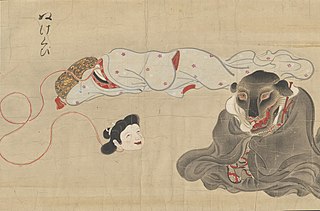
The rokurokubi is a type of Japanese yōkai (apparition). They look almost completely like humans, with one major difference. There are two types of Rokurokubi: one whose neck stretches, and one whose head comes off and flies around freely (nukekubi). The Rokurokubi appear in classical kaidan and in yōkai works. It has been suggested, however, that the idea of rokurokubi may have been created purely for entertainment purposes rather than originating from any folk beliefs or legends.
Kanbun, a form of Classical Chinese as used in Japan, was used from the Heian period to the mid-20th century. Much Japanese literature was written in this style, and it was the general writing style for official and intellectual works throughout the period. As a result, Sino-Japanese vocabulary makes up a large portion of the Japanese lexicon, and much classical Chinese literature is accessible to Japanese readers in some semblance of the original. The corresponding system in Korean is gugyeol (口訣/구결).
Super Machine Zambot 3 is a Super Robot anime series created by Yoshiyuki Tomino and Yoshitake Suzuki, featuring character design by Yoshikazu Yasuhiko and produced by Sunrise. It was first broadcast on Japanese TV in 1977. The series lasted for 23 episodes.
In Japanese, encyclopedias are known as hyakka jiten (百科事典), which literally means "book of a hundred subjects," and can trace their origins to the early Heian period, in the ninth century. Encyclopedic works were published in Japan for well over a thousand years before Japan's first modern encyclopedias were published after Japan's opening to the West, during the Meiji Period (1868–1912). Several encyclopedias have been published in Japan since World War II, including several children's encyclopedias, and two major titles are currently available: the Encyclopedia Nipponica, published by Shogakukan, and the Sekai Dai-Hyakka Jiten, compiled by the Heibonsha publishing company. A Japanese Wikipedia is also available.
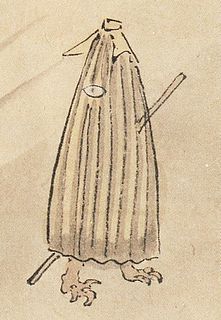
Kasa-obake are a mythical ghost or yōkai in Japanese folklore. They are sometimes, but not always, considered a tsukumogami that old umbrellas turn into. They are also called "karakasa-obake" (から傘おばけ), "kasa-bake" (傘化け), and "karakasa kozō" (唐傘小僧).
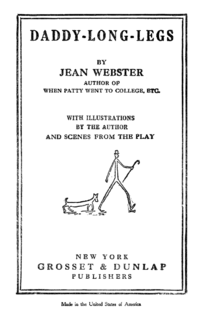
Daddy-Long-Legs is a 1912 epistolary novel by the American writer Jean Webster. It follows the protagonist, Jerusha "Judy" Abbott, as she leaves an orphanage and is sent to college by a benefactor whom she has never seen.
Hyakki Tsurezure Bukuro is the fourth book in Japanese artist Toriyama Sekien's famous Gazu Hyakki Yagyō tetralogy. A version of the tetralogy translated and annotated in English was published in 2016. The title is a pun; "hyakki," normally written with the characters "hundred" and "oni," is instead written with "hundred" and "vessels." This hints that the majority of the yōkai portrayed in its pages are of the variety known as tsukumogami, man-made objects taken sentient form. Hyakki Tsurezure Bukuro is preceded in the series by Gazu Hyakki Yagyō, Konjaku Gazu Zoku Hyakki, and Konjaku Hyakki Shūi.

Satori in Japanese folklore are mind-reading supernatural monsters ("yōkai") said to live within the mountains of Hida and Mino.
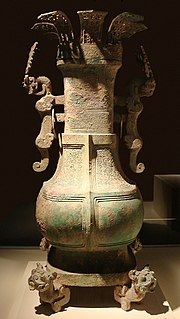
Kui is a polysemous figure in ancient Chinese mythology. Classic texts use this name for the legendary musician Kui who invented music and dancing; for the one-legged mountain demon or rain-god Kui variously said to resemble a Chinese dragon, a drum, or a monkey with a human face; and for the Kuiniu wild yak or buffalo.
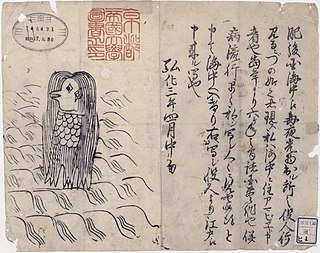
Amabie (アマビエ) is a legendary Japanese mermaid or merman with 3 legs, who allegedly emerges from the sea and prophesies either an abundant harvest or an epidemic.

Onibi (鬼火) is a type of atmospheric ghost light in legends of Japan. According to folklore, they are the spirits born from the corpses of humans and animals, and are also said to be resentful people that have become fire and appeared. Also, sometimes the words "will-o'-wisp" or "jack-o'-lantern" are translated into Japanese as "onibi".
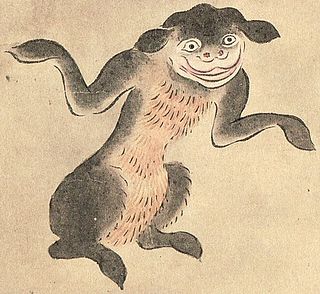
The yamabiko (山彦) is a mountain god, spirit, and yōkai in Japanese folklore. Literally translated, "yamabiko" means "echo." It is the yōkai responsible for the natural phenomenon in mountains or canyons. Living deep in the mountains, direct encounters with the yamabiko are rare. Often they are heard, but never seen. The small and elusive yokai wasn't officially classified until the Edo period in Japan. Instead the bizarre noises coming from the mountain were attributed to a natural phenomenon, like birds, and not given any spiritual significance. It is usually depicted with gray fur, peach-colored belly, floppy ears, large grin, and arms outstretched as though it is caught mid-shrug.
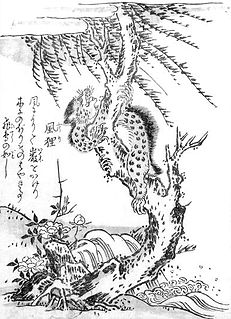
Fūri is a yokai of China and Japan. They are also called Fūseijou (風生獣), Fūbo (風母), and Heikō (平猴). The name can be seen in the Bencao Gangmu of China, and in the Japanese works Konjaku Hyakki Shūi by Toriyama Sekien, the Mimibukuro by Negishi Shizumori, and in the Wakan Sansai Zue as well as other literature from the Edo period.

Jué yuán (玃猿) is a legendary animal in the legends of China. They are also called Jué (玃), Jué fù (玃父), Jiā (猳), Jiā guó (猳國), and mǎ huà (馬化). They are similar to monkeys, and thus possess a characteristic of carrying away human females and violating them.
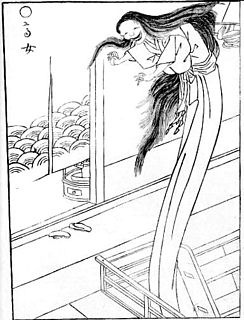
Takaonna was a Japanese yōkai that appeared in the Gazu Hyakki Yagyō by Toriyama Sekien.
The Okuri-inu (送り犬) is a kind of yōkai. There are stories of the okuri-inu from the Tōhoku region to Kyushu, but depending on the area it can be a wolf not a dog, and there are numerous differences in its behaviour. It is sometimes also called simply the 'yama-inu' (山犬) or the 'ōkami' (狼) (wolf).

Yamawaro or yamawarawa (山童) is a yōkai that appears in mountains that is told about in Western Japan, starting in Kyushu. Sometimes it is said that they are kappa who have come to dwell in the mountains. In the Ashikita District, Kumamoto Prefecture, in addition to "yamawaro," it is also called "yamawarō", "yamamon", "yamanto", "yaman wakkashi", and "yaman ojiyan". Also, in the Kuma District of the same prefecture, they can also be called "yaman-tarō" (山ん太郎) or "yamanbo" (山ん坊).
